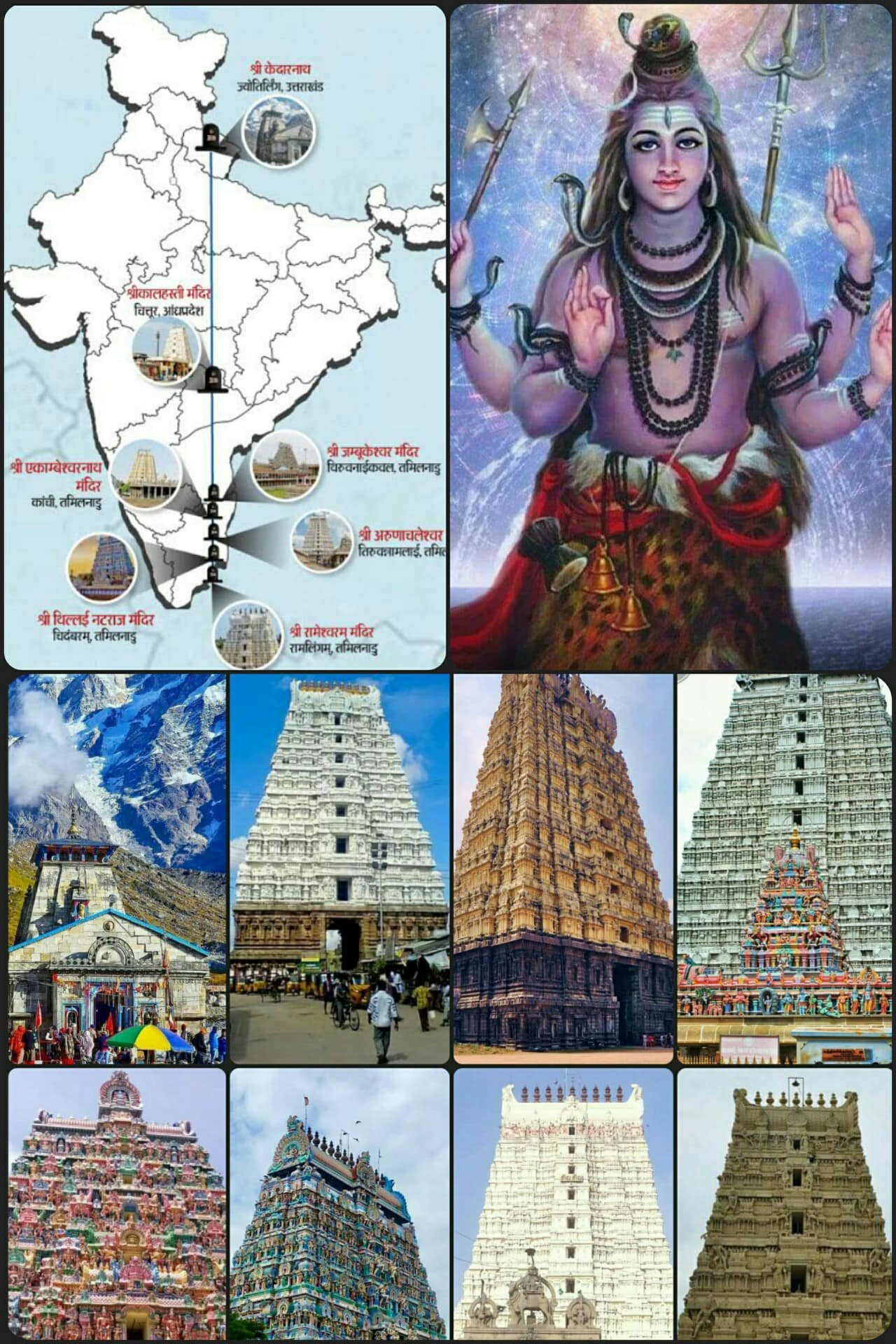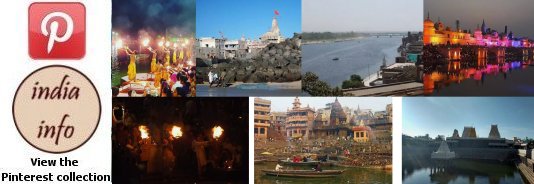Snippets of Information
HINDU TEMPLES
* 5 Feb 2023
Dwarkadhish Temple, one of the Char Dham pilgrimages, is situated in the
city of Dwarka in Gujarat. Dwarka lies on the banks of river Gomti, in
Saurashtra. It is historically considered as the capital of Lord
Krishna. The city eventually submerged under the sea except for Temples.
Source:
Dwarkadhish Temple (Jagat Mandir), (trilok sundar - the most beautiful in all the three worlds), is believed to have been
established more than 2500 years ago by Lord Krishna’s great grandson,
Vajranabh. The ancient temple has been renovated several times. The
original structure was destroyed by Mahmud Begada in 1472, and
subsequently rebuilt in the 15th-16th century. The temple stands on a
small hill accessed by 50 plus steps, with heavily sculptured walls that
cocoon the sanctum with the main Krishna idol. Around the complex lie
other smaller shrines. The walls have intricately carved mythical
characters and legends. The impressive 43 m high spire is topped with a
flag made from 52 yards of cloth that flutters in the soft breeze from
the Arabian Sea behind the temple. There are two doors (swarg and moksh)
for the entry and exit of the temple. A bridge called Sudama Setu
(7am-1pm, 4-7.30pm) at the base of the temple takes one across the Gomti
creek towards the beach.
It is believed that Lord Krishna arrived here from Braj in Uttar Pradesh
to build the city. The temple was established by his grandson. It is at
the cusp of the Gomti River and the Arabian Sea, providing a scenic
backdrop to the spiritual site. It is said that Dwarka was submerged
under the sea six times and what we see now is its seventh avatar.
Source: gujarattourism.com
* 5 Feb 2023
Char Dham means the four pilgrimage sites that were established
by Adi Shankaracharya in the 8th century AD. These are Badrinath,
Dwarka, Puri and Rameswaram. However, there is another pilgrimage
circuit consisting of four sites, all of which are as ancient and
revered as the ones mentioned above. Located in Uttarakhand, these are
Badrinath, Kedarnath, Gangotri and Yamunotri. A devotee is required to
visit all of these Char Dham temples in the Garhwal Himalayas during the
Char Dham Pilgrimage Tour. All of these temples are located in the
Garhwal region. While Yamunotri and Gangtori are located in the
Uttarkashi district, Kedarnath and Badrinath are located in Rudraprayag
and Chamoli districts respectively.
Source: chardham-pilgrimage-tour.com
* 5 Feb 2023
Char Dham Yatra or pilgrimage is a tour of four holy sites -
Yamunotri, Gangotri, Kedarnath and Badrinath, Uttarakhand, nestled high
up in the Himalayas. In Hindi, 'char' means four and 'dham' refers to
religious destinations.
The high-altitude shrines remain shut for around six months every year,
opening in summers (April or May) and closing with the onset of winter
(October or November). It is believed that one should complete the Char
Dham Yatra in a clockwise direction. Hence, the pilgrimage starts from
Yamunotri, proceeds towards Gangotri, onto Kedarnath, and finally ends
at Badrinath. The journey can be completed by road or by air (helicopter
services are available). Some devotees even do a Do Dham Yatra or a
pilgrimage to two shrines - Kedarnath and Badrinath.
The Yamunotri temple, lodged in a narrow gorge close to the source of
River Yamuna (the second-most sacred Indian river after River Ganga) in
Uttarkashi district, is dedicated to Goddess Yamuna. The district of
Uttarkashi is also home to Gangotri dedicated to Goddess Ganga, the most
sacred of all Indian rivers. Located in the Rudraprayag district lies
Kedarnath, dedicated to Lord Shiva. Badrinath, home to the sacred
Badrinarayan Temple, is dedicated to Lord Vishnu.
Source: uttarakhandtourism.gov.in
* 5 Feb 2023
Yamunotri Temple is dedicated to Goddess Yamuna and houses a
black marble idol of her. The temple also houses an idol of Ganga Devi.
It is believed to have been built in 1839 by Naresh Sudarshan Shah, the
king of Tehri. There are two hot water springs, called Surya Kund and
Gauri Kund, which are located in close proximity to the temple. Rice and
potatoes are boiled in its waters, and then offered as prasad
(offerings) to the goddess.
Gangotri Temple is dedicated to Goddess Ganga and was built by
Amar Singh Thapa, the famed Gurkha general, in the 19th century. It is
believed that this is where Goddess Ganga descended on earth when Lord
Shiva opened the locks of his hair and released the mighty waters.
Kedarnath Temple, dedicated to Lord Shiva is the most remotest of
all the Chota Char Dham pilgrimage sites. It is situated at 3,583
meters, in close proximity to river Mandakini. According to mythology,
the temple is believed to have been built by the Pandavas. The earliest
reference to it can be found in the Skanda Purana.
Badrinath Temple, built to honour Lord Vishnu (also known as
Badri Vishal), is unique because it is a part of both the Chota Char
Dham and Char Dham. It was established as a major pilgrimage site by Adi
Shankaracharya in the 7th century. A Garhwal king rebuilt the temple in
the 16th century, but it has been renovated several times because of
natural calamities.
* 9 Aug 2022

Photo courtesy: fb - Bharatvarsha @IndiaTales7
Shiva Shakti Aksh Rekha - Ancient Siva Temples (Kedarnath to Rameswaram) on a straight line
Lord Siva Temples in India on almost same Longitude or around 79° E 41 ‘54 “
* Kedarnath - Kedarnath Temple (30.7352° N, 79.0669)
* Kaleshwaram - Kaleshwara Mukteeshwara swamy Temple (18.8110, 79.9067)
* Srikalahati - Srikalahasti Temple (13.749802, 79.698410)
* Kanchipuram - Ekambareswarar Temple (12.847604, 79.699798)
* Thiruvanaikaval - Jambukeswara Temple (10.853383, 78.705455)
* Tiruvannamalai - Annamalaiyar Temple (12.231942, 79.067694)
* Chidambaram - Nataraja Temple (11.399596, 79.693559)
* Rameswaram - Ramanathaswamy Temple(9.2881, 79.3174)
Five of these temples represent the Pancha Bhoota (5 elements of nature - Earth, Water, Fire, Air and Space).
Tiruvannamalai (Thejo sthalam - Fire)
Kanchipuram (Prithvi sthalam - Earth)
Tiruvanaikaval (Appu sthalam - Water)
Kalahasti (Vayu sthalam - Air)
Chidambaram (Akasa sthalam - Space)
Sources: toistudent.timesofindia.indiatimes.com /tehelka.com
* 16 Nov 2021
Parasurama Kshetras (Mukthi sthalams in Karnatka)
* 14 Nov 2021
The seven mukthi sthalams
Thiruvarur Thiagarajartemple - attain mukthi on being born in the site
Kancheepuram Egambaranathar temple - attain mukthi on living in the site
Varanasi (Kasi) - attain mukthi on dying in the sthalam
Chidambaram (Thillai) Natarajar temple - attain mukthi on getting darshan in the sthalam
Thiruaalavaai (Madurai) - attain mukthi on speaking of the sthalam
Avinaasi Lingeswarar temple - attain mukthi on hearing of the sthalam
Thiruvanamalai - attain mukthi on just thinking of the sthalam
Source: aanmeegam.in
* 14 Nov 2021

Sapta Puri or mukthi sthalams
The seven Hindu temple sites to go on a holy pilgrimage to attain Moksha or Muthi, i.e., liberation from the birth-death cycle.
Ayodhya (Ayodyapuri) Vishnu as Rama
Mathura (Madurapuri) Vishnu as Krishna
Haridwar (Mayapuri) Shakti as Mayadevi
Varanasi (Kasipuri) Shiva as Vishwanath
Kanchipuram (Kanchipuri) Durga as Kamakshi
Ujjain (Avantikapuri) Shiva as Mahakaleshwar
Dwarka (Dwarakapuri) Vishnu as Krishna
Source: indianastrology.co.in
* Jul 2021
Sthala vrukshams (sthala Vriksham) - sacred trees in temples
- Fig Tree (aththi maram)
- Mahua Tree (iluppai maram)
- Kadamba maram
- Mango tree (maa maram)
- Makizha maram
- Arjuna Tree (marutha maram)
- Jack tree (palaa maram)
- Paray maram
- Vanni maram
- Margosa tree (vaebba maram)
- Bael Tree
Source: shaivam.org
|